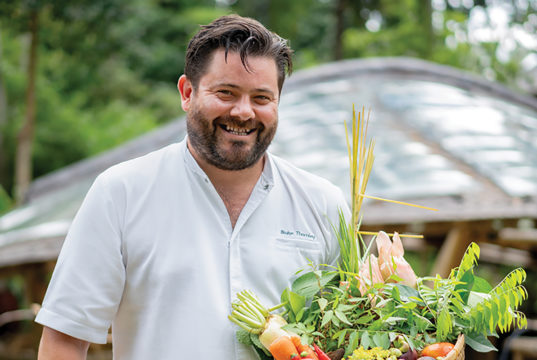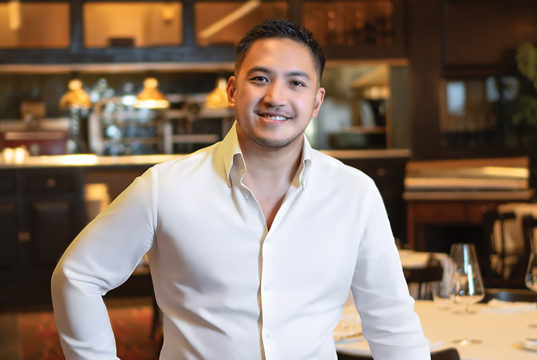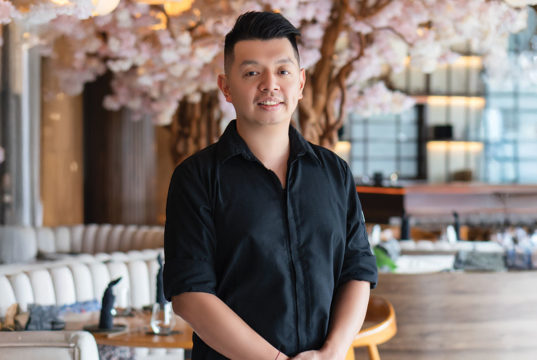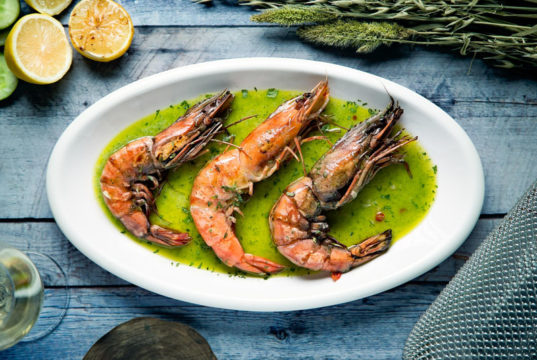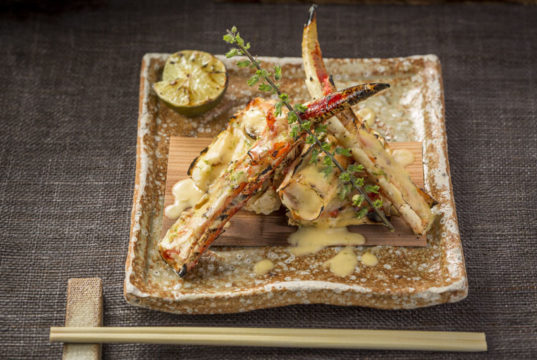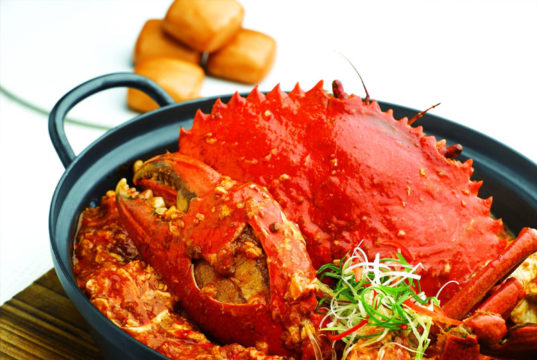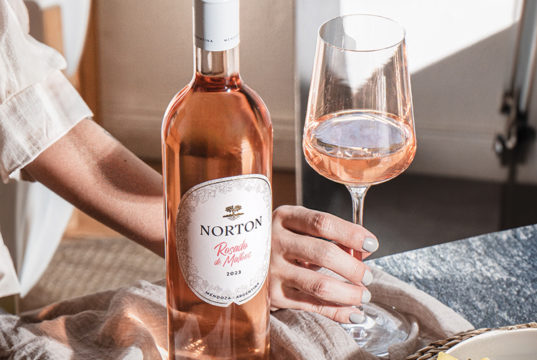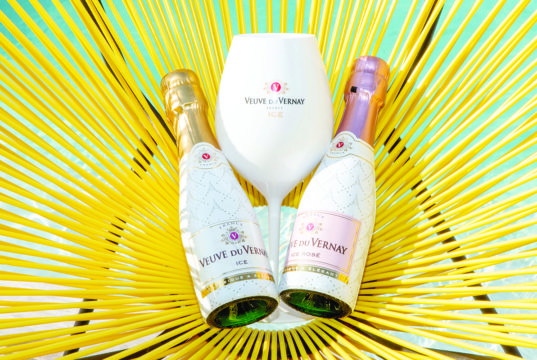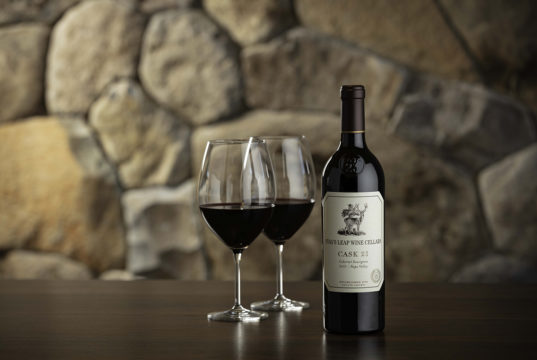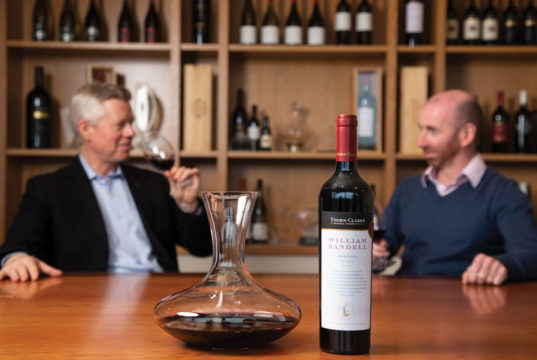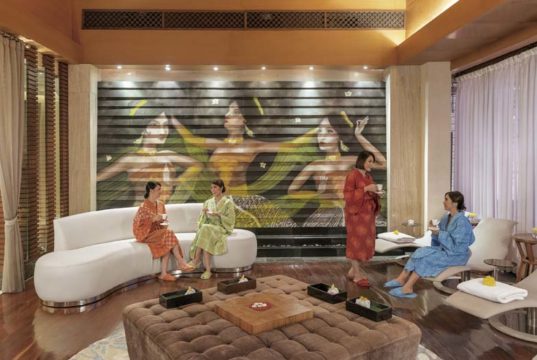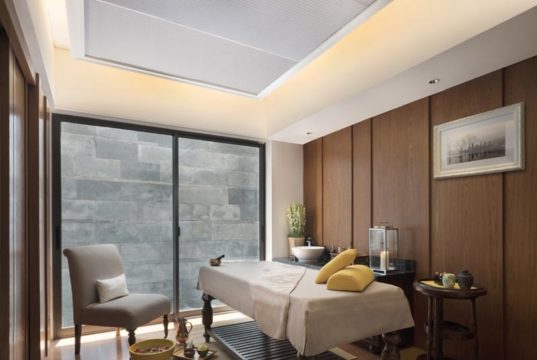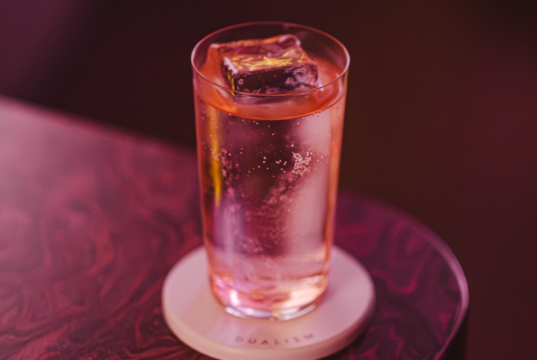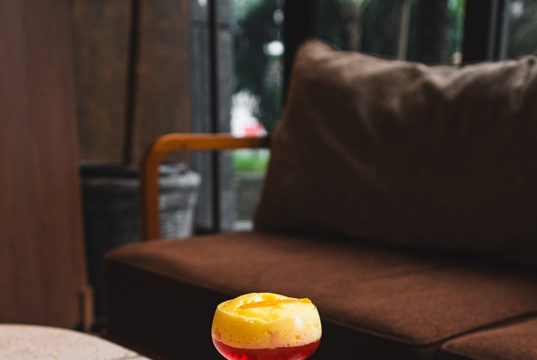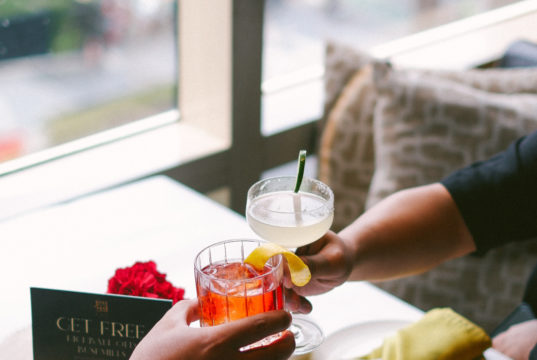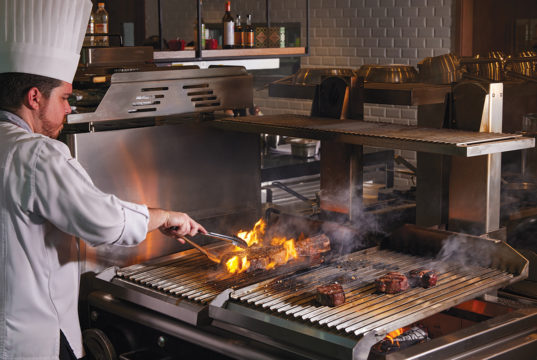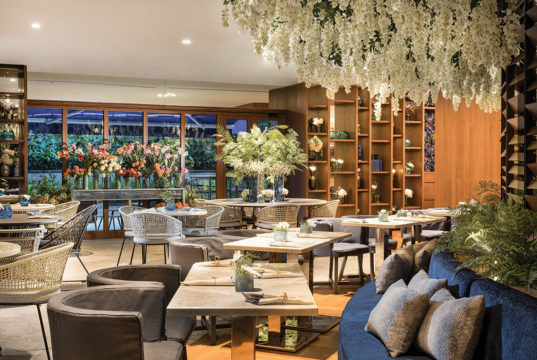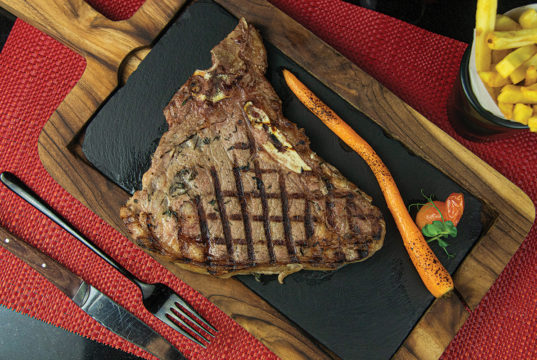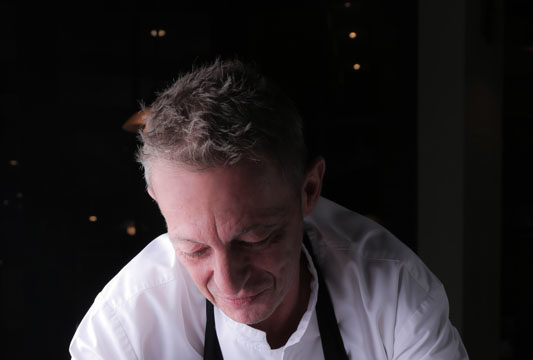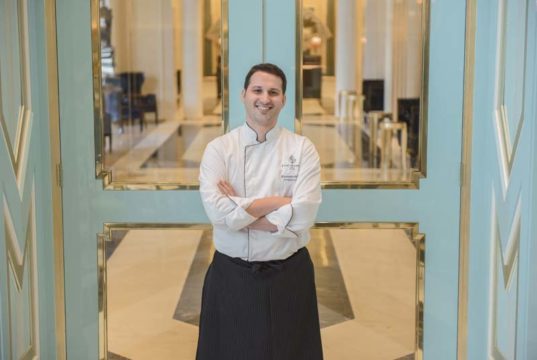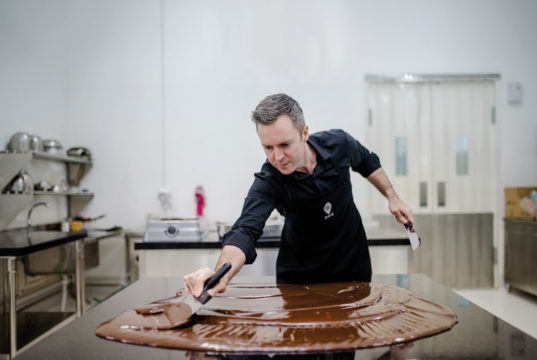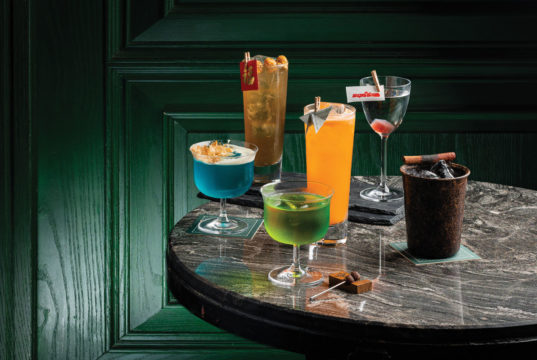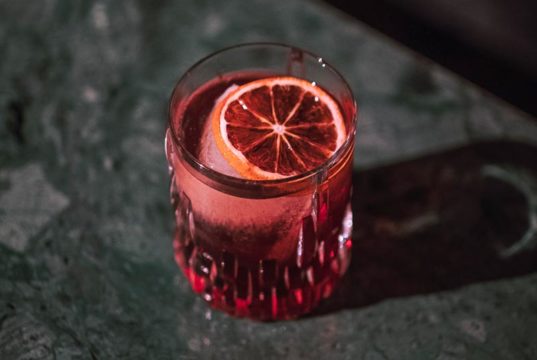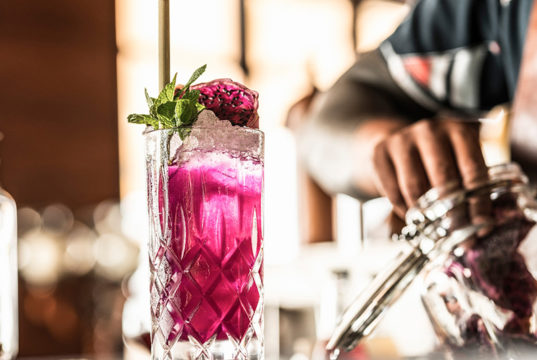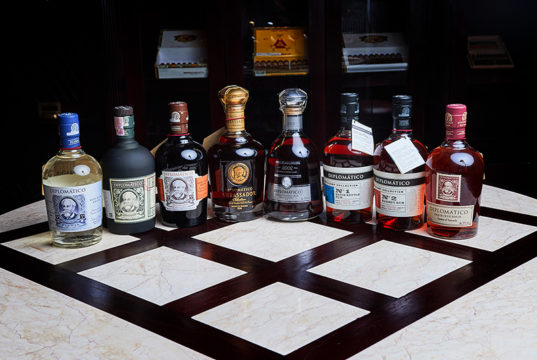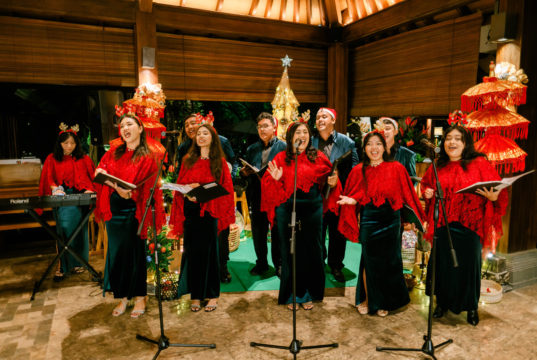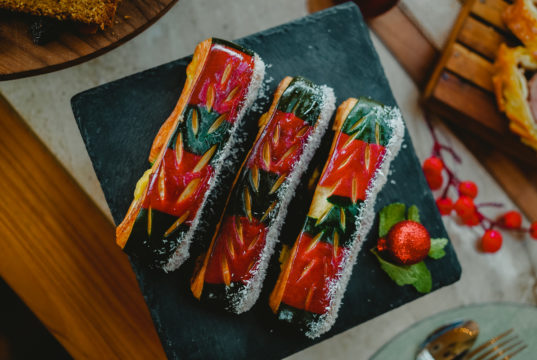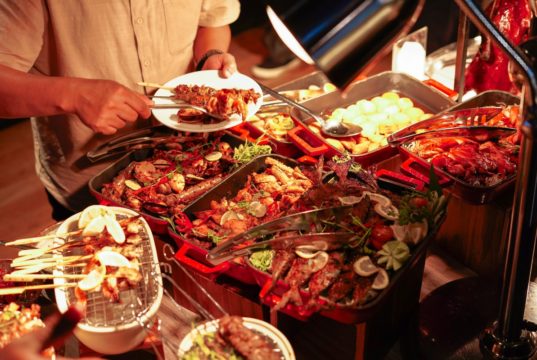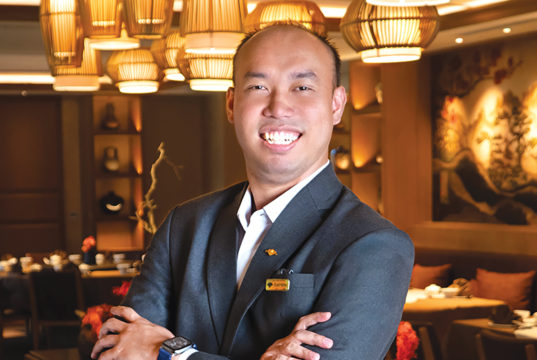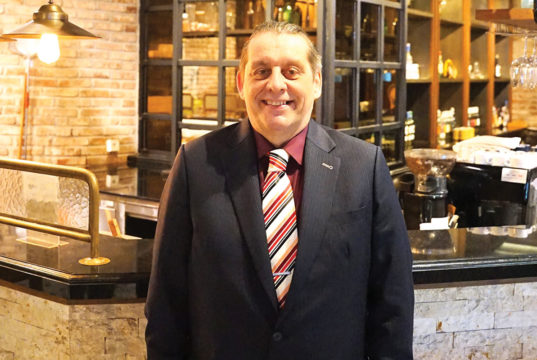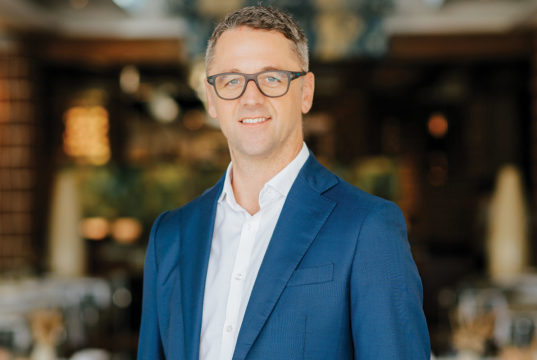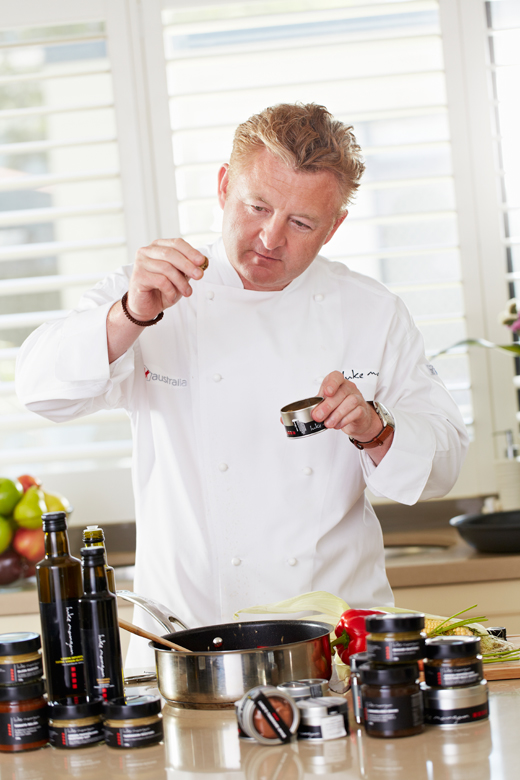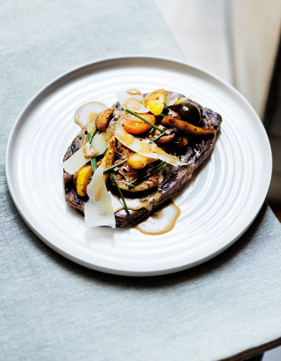Australian Celebrity Chef Luke Mangan brought his F&B empire to Indonesia in a big way this year with the openings of Salt grill in Jakarta and Salt tapas in Bali. Exquisite Taste spoke to him about his career, his cooking philosophy and what salt means to him.
When it comes to Australian chefs in Asia, there may be no bigger name than Luke Mangan. After a whirlwind culinary education at some of the world’s most prestigious restaurants, Mangan opened his first restaurant, Salt in Sydney, to rave reviews. From there, he went on to open more restaurants, most carrying the Salt moniker, in Australia, Tokyo and Singapore. He also became a media icon through his TV appearances and highly successful cookbooks. In addition to his terrestrial restaurants, you can also find Mangan’s food in the air, having designed the menus for Virgin Australia, and on the sea, where you can find Salt grills on several of P&O Cruise’s luxury ships.
One land that Mangan’s F&B empire hadn’t touched was Indonesia, until this year that is. We spoke to Mangan on the eve of the grand opening of Salt tapas, his first restaurant in Bali located in the 5-star Sentosa Villas in Seminyak. The next week, he was headed to Jakarta to visit Salt grill, his much raved about new restaurant in the capital’s Altitude complex, to host the launch of his latest cookbook, “Salt grill.” Fortunately he was able to find time amidst his busy Indonesia itinerary to talk to us about how he finds the passion for so many different projects.
Q: So why Indonesia, and why now?
A: Bali made sense to me because I came here all the time, but we did have to look at many locations before we found the right site here at Sentosa Seminyak. We may even do a Salt grill here one day. And the Altitude complex in Jakarta also happened to be opening this year, which was the perfect place for us to get our foot in the door there. Jakarta is a real up-and-coming market, so we’re also planning to do Salt tapas there as well. So both of them, independently, made sense to me, and the timing just happened to work out this way. Indonesia is close to home for me. It’s only a five hour flight on Virgin Australia — the food is beautiful on Virgin Australia, by the way (laughs).
Q: Yes, we’ve heard they’ve got a great chef working for them! So stepping back, why did you choose to become a chef in the first place?
A: Well, first I got kicked out of school at 15 and at that point I pretty much got thrown into cooking as it was one of the only options available to me. For the first four years, I hated it! I was about 19 when I just realised, “Oh man I can’t do anything else,” so I just kept at it and that was it. There were many times when I was about to throw in the towel, but I just kept thinking, what else am I going to do? Now, of course, I’m pretty glad I kept with it.
Q: Who were some of the chefs that influenced your approach to cooking?
A: I did my apprenticeship at a restaurant called Two Faces in Melbourne. Herman Schneider’s approach there was quite strict, very classic food. Then I went to London for four years to cook with the Roux brothers, three-star Michelin chefs, very French. And again, they did very classic cuisine. After that, I worked with another guy called Rowley Leigh, who did a much more modern take on French cuisine. By the time I got back to Australia, I was 24 and I took all the things I had learned from them and combined them with my own ideas to come up with the approach I use now.
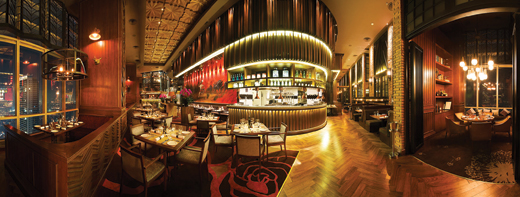
Q: How would you describe your cooking philosophy?
A: Obviously using the freshest and finest ingredients is first and foremost. But simple, uncomplicated food is what I really strive for. A lot of chefs nowadays use all this molecular cuisine, which I don’t really get. There are two people who I think do it really well — Heston [Blumenthal] and Ferran [Adrià]. I’ve been lucky enough to eat at both of their restaurants and they are amazing. But with cooking, unless you have a total understanding of its foundations, it’s very hard to get that sort of thing right. It’s like you have to understand the rules before you can break them. A lot of young chefs try to apply elements of molecular cooking without understanding all of the basics and end up with something that is complicated but just doesn’t taste very good. I don’t understand it so, personally, I’m not going to touch it.
Q: You mentioned Heston Blumenthal, who applied his scientific approach to cooking to the food served on British Airways. What is your approach to making the food on Virgin Australia as tasty as possible?
A: It’s a challenge, but I always like a challenge. As you may know, your taste buds lose a lot of sensitivity up in the air. So what I try to do is cook a lot with fragrant spices. I also do a lot of braises and stews, which can maintain their moisture and texture more easily. But we also do a lot of salsas and fresh garnishes, which are applied right before serving by the crew. For example, if you order a simple baked barramundi, it comes with crushed potatoes and a tomato salsa, and the crew actually finishes the dish off with a bit of olive oil mixed with fresh herbs placed on top of the fish, giving it a vibrant, fresh flavour. But a lot of the food we do in the air is the same food we do in our restaurants. So my goal is to have a real restaurant in the air. It may take a while to get to that point but at least I’m trying.
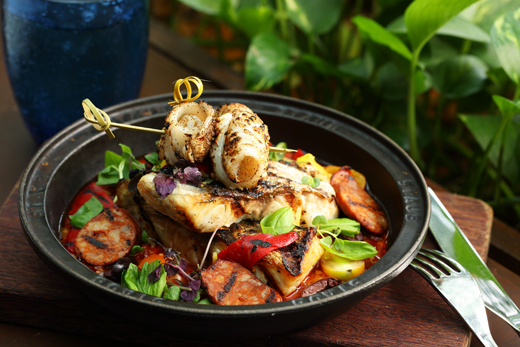
Q: What is your approach to developing the menu at a new restaurant, especially in places like Bali and Jakarta where it might be harder to source some ingredients?
A: It’s crucial to understand the local produce and what you can get reliably. Sometimes it is difficult here [in Bali], but opening in Jakarta first helped a lot, in that it taught us what we could get here in Indonesia. But it’s not as difficult as everyone thinks. We actually do get beautiful fresh fish every day, and the local fruits and vegetables you can get here are amazing. So we do plan our menu based around the best of what we can get here rather than just writing a menu and saying, “Import this and this for me.” It’s really important to work like that.
Q: With so many restaurants spread across several countries, how do you keep track of everything and make sure quality remains consistent?
A: I do travel to all of my restaurants quite a lot, but I’ve also got a lot of good staff I can depend on. My right-hand man in Sydney has been with me for 15 years. My chef in Jakarta has been with me for 10. My guy in Japan has worked with me for eight years. So they’ve all been with me for a long time. I’m not a micromanager. They all know what I expect and what I want and I believe mistakes are going to happen in my restaurants whether I’m there or not. Wine gets spilled on a customer if I’m there or if I’m not, sometimes you get something overcooked or undercooked, whether I’m there or not. It’s going to happen. But as long as I’m aware of those problems, we can fix them. Every morning I get a report from every restaurant, every chef and every manager, about what happened the previous night. So transparency is very important.
Q: What sorts of qualities do you look for in the chefs you hire?
A: Honest, hard-working, committed and loyal. If you have all those qualities, the rest will follow. A lot of chefs come in these days thinking it’s all about the money or fame. They all want to be on TV and have a cookbook etc. Yes, those things are possible and I’ve been lucky enough to be involved in them, but those aren’t the things I was looking for when I started. Most of the time, being a chef is not a glamourous job. It’s about putting in long hours every night. It’s not about creating one fantastic dish, it’s about cooking the same fantastic dish perfectly 30 times a night. You have to have that kind of dedication to make it in this industry.
Q: What do you think of the culture of “celebrity chefs” that has arisen in the past decade or so?
A: I hate the term celebrity and I don’t consider myself one. I’m just a guy who got kicked out of school and was lucky enough to find something that I love to do. I’ve got a lot of great chefs who started from nothing in Australia and are now running kitchens in Jakarta, Bali, Singapore and Tokyo, and one of the things I’m proudest of is how I helped them evolve throughout their careers. That’s what really brings me joy.
Q: Salt is the name that comes attached to most of your restaurants. What made you choose that word in the first place?
A: I first opened Salt in Sydney in 1999. I was trying to think of a name and I was searching for something different. At the time, a lot of the restaurants in Sydney were quite stuck up, and I really hate stuck up, formal restaurants. So I wanted a name that felt friendly and relaxed. Back in the days of ancient Greece, they gave salt to people as a sign of friendship and hospitality. Part of the reason was that you couldn’t cook without it and it was a very expensive commodity back in the day. So that sense of warmth and friendship was something I wanted my restaurant to represent. So Salt just stuck.
Q: Congrats on the recent release of your latest cookbook, “Salt grill.” What kind of recipes can readers find inside its pages?
A: It’s got a lot of tapas dishes and dishes for the grill. The major focus is on foods that you or I could cook at home. It’s not designed to be a restaurant cookbook — it’s meant to be fun and accessible to everybody. It’s all about meats off the grill, fish off the grill, lots of sashimis with dressings. It takes elements from all of my travels, especially those in Japan. Japanese food is one of my favourites because of the way they take a simple, beautiful product like fish or meat and they finish it with just a flavourful dressing or sauce. I think that’s what it’s all about for me.
ROASTED CAPSICUM & WHITE ANCHOVIES ON TOAST
makes 8 piecesINGREDIENTS:
– 3 yellow capsicums (peppers).
– 3 red capsicums (peppers).
– 80 ml (2½ fl oz) extra virgin olive oil, plus extra for drizzling.
– 100 g (3½ oz) French shallots, diced.
– 6 garlic cloves, thinly sliced
– 55 g (2 oz) caster (superfine) sugar.
– 50 ml (1¾ fl oz) cabernet sauvignon vinegar or red wine vinegar.
– 150 g (5½ oz) sultanas (golden raisins).
– 8 baguette slices.
– 16 white anchovies (see note)
– 2 tablespoons flat-leaf (Italian) parsley leaves.
METHOD:
– Preheat the oven to 200ºC (400ºF).
– Place the capsicums in a roasting tin, drizzle with some extra virgin olive oil and season with sea salt and freshly ground black pepper. Bake for 15–20 minutes, or until the skins have blistered.
– Place the capsicums in a bowl, cover with plastic wrap and allow to sweat in their skins for 30 minutes. Remove the plastic wrap. Remove the seeds and membranes from the capsicums, then scrape off the skin. Slice the flesh into thin strips and set aside.
– Place a saucepan over medium heat. Add the shallots, garlic and the 80 ml (2½ fl oz) olive oil and cook, without colouring, for 3–5 minutes, or until the shallots and garlic have become translucent.
– Sprinkle with the sugar and stir to make a light caramel, then stir in the vinegar to deglaze the pan. Add the capsicum strips and cook for about 3 minutes, then add the sultanas and cook for a further 3 minutes.
– Remove from the heat, season to taste, then place in a bowl to keep warm.
– Drizzle the baguette slices with extra virgin olive oil. Chargrill or toast the slices, then arrange on a serving tray.
– Divide the capsicum mixture among the toasts, arrange the anchovies on top and garnish with the parsley. Drizzle with a little more olive oil and serve.
NOTE:
Popular in Spain and other Mediterranean regions, white anchovies (also called boquerones or gavros) are gently marinated in a vinegar mixture rather than cured in salty brine, and have a more mellow flavour and a much paler colour than regular anchovies. You’ll find them packed in tins or jars at good delicatessens and fine food stores.……………………………………………………………………..
WAGYU SCOTCH MINUTE STEAK WITH ASPARAGUS, TOMATOES, ROASTED VEGETABLES & TRUFFLE JUS
serves 4INGREDIENTS:
– 1 large parsnip extra virgin olive oil, for drizzling and pan-frying.
– 2 yellow zucchini (courgettes)
– 4 x 200 g (7 oz) wagyu scotch minute steaks or grain-fed beef steaks
– 8 white asparagus spears, peeled and cut in half crossways.
– 20 cherry tomatoes, cut in half
– 2 tablespoons aged balsamic vinegar
– 60 g (2¼ oz) shaved parmesan cheese.
– chive batons, to garnish
METHOD:
– Preheat the oven to 180ºC (350ºF).
– Peel the parsnip and cut in half widthways. Now cut the smaller end lengthways into quarters or baton shapes, and the larger end into eighths. Place on a baking tray, drizzle with olive oil and season with sea salt and freshly ground black pepper. Roast for 10–15 minutes.
– Cut each zucchini in half widthways, then each half lengthways into sixths. Add to the baking tray with the parsnip, drizzle with olive oil and season.
– Roast for a further 8–10 minutes, or until both the parsnip and zucchini are tender.
FOR THE TRUFFLE DRESSING
– Place the madeira sauce in a saucepan and simmer until the sauce has reduced by two-thirds and has a thick consistency.
– Remove from the heat and cool slightly.
– Whisk in the olive oil, vinegar and the truffle salsa or truffle oil. Season with sea salt and freshly ground black pepper and keep warm.
– Season the steaks and cook on a hot barbecue or chargrill pan for 4–5 minutes on each side, or a little longer if you prefer them well done. Remove from the heat and leave to rest for 5 minutes on a wire rack.
– Meanwhile, place a saucepan over medium heat. Add 1 tablespoon of olive oil and the asparagus and cook for 2 minutes. Add the cherry tomatoes and cook for 30 seconds, then add the vinegar and cook for 20 seconds. Transfer the mixture to a tray.
– Add the roasted parsnip and zucchini to the same tray as the asparagus mixture.
TO SERVE
– Place the steaks on four serving plates and arrange the vegetables on top. Drizzle with the truffle dressing.
– Scatter the shaved parmesan and chive batons over and serve.




